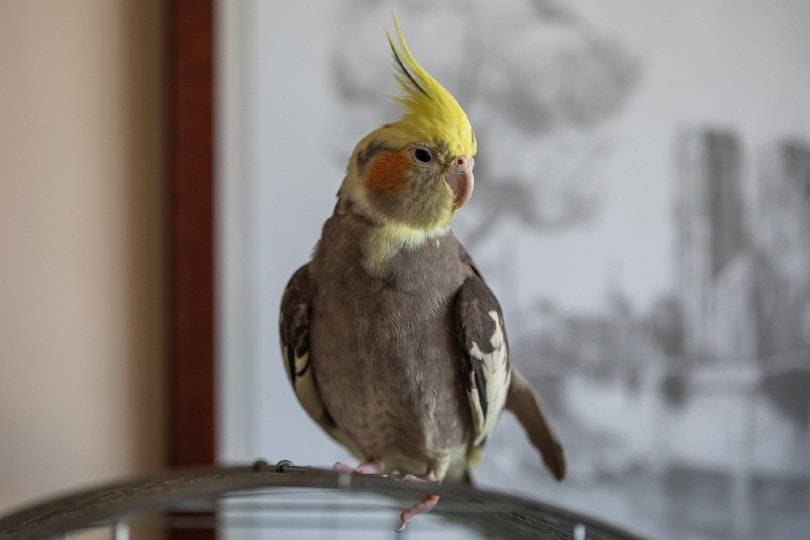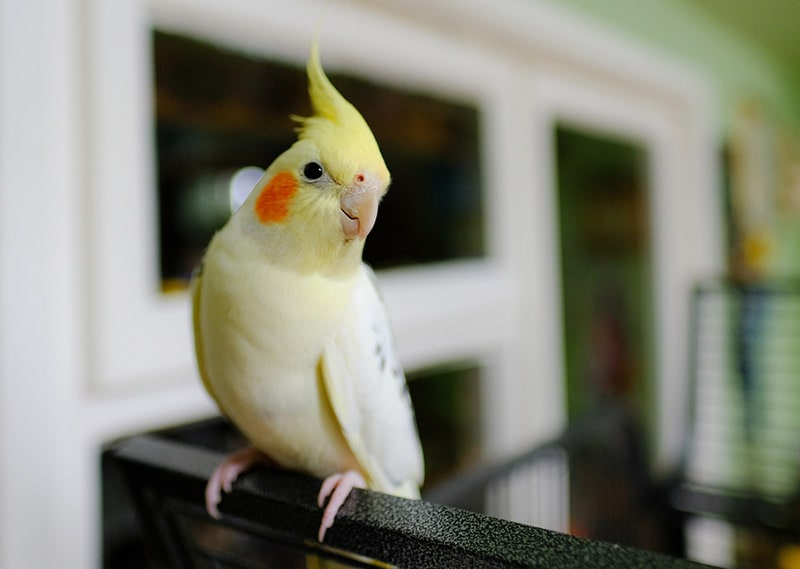Grey Cockatiel: Facts, Origin & History (With Pictures)
Updated on
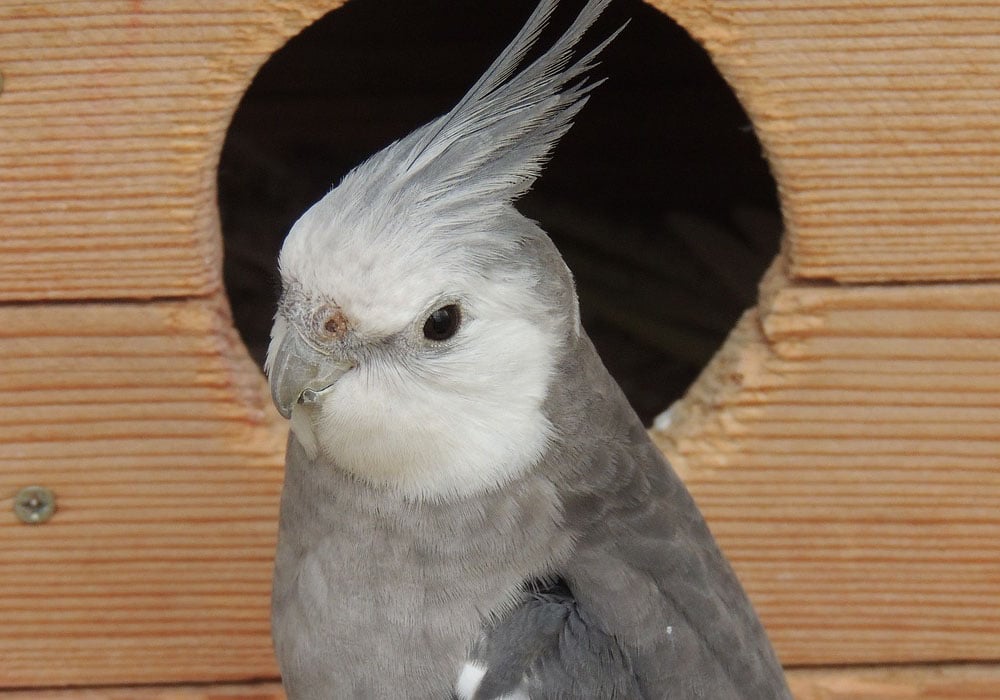
All cockatiels—regardless of their plumage color—are the same species, Nymphicus hollandicus. They’re members of the cockatoo bird family and are native to Australia, though they’re one of the most popular pet birds in the world. Grey cockatiels are not the most colorful coloration, but they’re still a beautiful bird worth considering if you want to add a new member to your flock.
| Length: | 12–13 inches |
| Weight: | 70–120 grams |
| Lifespan: | 10–25 years |
| Colors: | Grey |
| Suitable for: | Beginner bird owners, apartment dwellers |
| Temperament: | Outgoing, friendly, affectionate, social, docile |
Grey is the most common cockatiel coloration, sometimes called “normal grey” or “wild-type” coloring. Grey is the natural color of wild cockatiels, though it’s not unheard of to find naturally occurring color mutations. Grey cockatiels have no mutations in their color genes, resulting in primarily grey plumage with white flashes on the outer portion of the wings. Males have yellow or white faces, while female faces are primarily grey. Both genders have orange areas on their ears.
Grey Cockatiel Characteristics
The Earliest Records of Grey Cockatiels in History
Cockatiels are known as quarrions in their native Australia. They live primarily in the arid or semi-arid country, mostly in the Outback, in the northern portion of the continent. First discovered in the 1770s, cockatiels are the smallest member of the cockatoo family, exhibiting many of the same features as their larger family members. The species made its way to Europe in the early 1800s, and the first captive breeding of cockatiels began in France during the 1850s. From there, cockatiels began spreading worldwide.
Grey Cockatiels are the original cockatiels, first identified in the late 1700s. However, after their introduction into Europe, it took around 100 years for the first color mutation (Pied) to evolve from grey.
How Grey Cockatiels Gained Popularity
Though the species was documented in the late 1700s, owning one as a pet didn’t become commonplace until the 1900s. The Australian government banned the exportation of native birds and parrots in 1894, so the cockatiels in North America and Europe are the result of domestic breeding efforts in these countries. Unfortunately, little documentation exists on how the species became popular in North America.
Color mutations began to develop in the 1950s, and today we have around 15 primary colors that have been established. Before the color mutations became commonplace, the cockatiel wasn’t as popular of a pet as most people preferred to keep “prettier,” more colorful birds.
Cockatiels are so popular amongst aviculturists for several reasons. First, they’re easy to care for and breed in captivity, making them a great pick for beginner bird owners or breeders. Next, their docile personalities make them a natural fit for human companionship. They’re also highly adaptable, curious, and gentle.
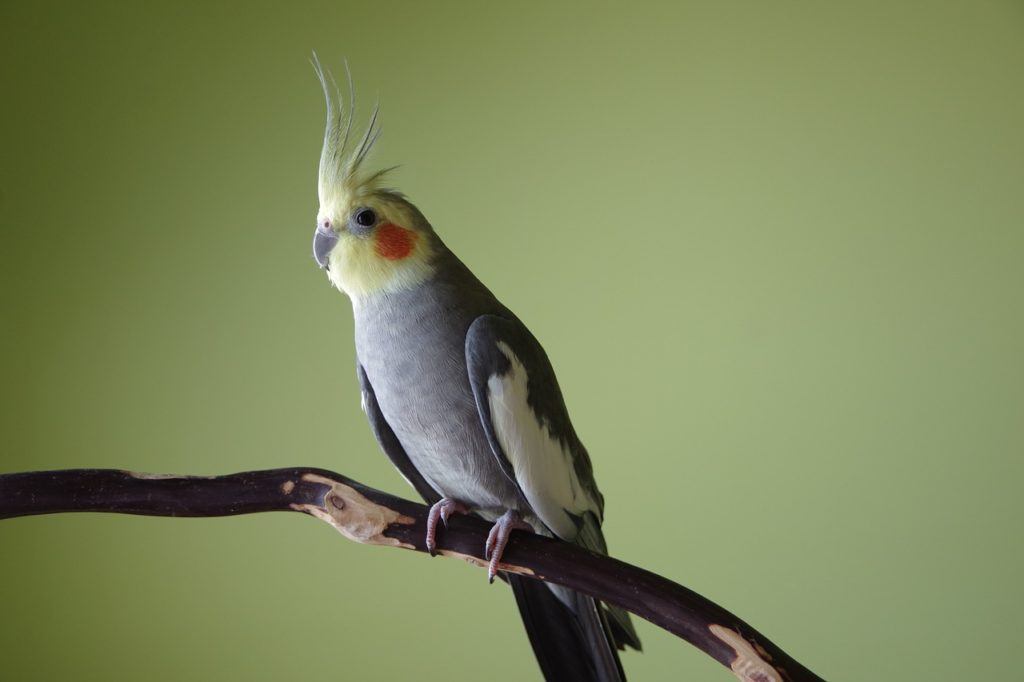
Top 5 Unique Facts About the Grey Cockatiel
1. Cockatiels use their head crests to express their feelings.
The cockatiel head crest is one of the species’ most recognizable features, though it serves a much bigger purpose than just being a cute physical trait. These tufts of feathers can help a cockatiel express its emotions. For example, it may become tilted slightly when the bird is relaxed or flattened close to the head if it’s angry.
2. Cockatiels are highly sociable pets.
Cockatiels are very social birds that require much interaction with their human family members to satisfy this sociable nature. Wild cockatiels travel in flocks and are naturally disposed to a social lifestyle. They make such fantastic pets because they can form deep bonds with their humans and with cage mates, toys, or other items in their cage.
3. Cockatiels love looking in the mirror.
Mirrors can cause much stress for some animals, but not for cockatiels. Most cockatiels enjoy having a mirror in their cage or close by as they enjoy looking at their own reflection. Mirrors can provide much enrichment and may even help a solitary cockatiel feel less alone, though they should not be used as a substitute for real interaction.
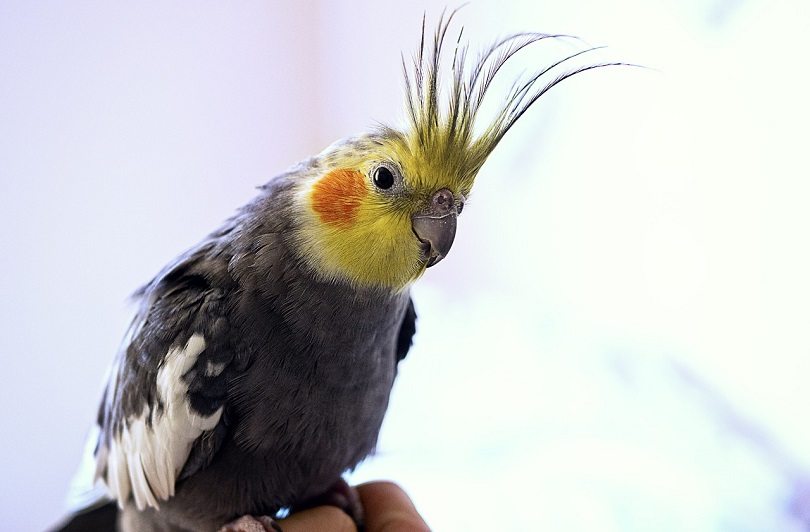
4. Cockatiels can talk.
Not all species of parrots can talk, but cockatiels can. Dedicated owners can teach them some words and phrases with a little time and patience. Furthermore, male cockatiels are easier to teach words and songs to than females.
5. Male Grey Cockatiels are easy to distinguish from their female counterparts.
Most grey cockatiels can be accurately sexed when they’re six months. A mature male has a yellow or white face, while his female counterpart’s face is a shade of grey. Most of the time, males have darker orange and more defined cheek patches than females. All juvenile Grey Cockatiels have barring on the tail underside, though it is typically lost after the male molts for the first time. Females will retain the barring for life.
Do Grey Cockatiels Make a Good Pet?
As with all cockatiel colorations, grey cockatiels make fantastic family pets. They’re gentle and affectionate and fit well in small homes. They’re not as loud as some of their parrot cousins, so they’re popular among apartment dwellers, too. Cockatiels are small compared to other companion bird species, but they have huge personalities that make them highly charismatic and entertaining.
All prospective bird owners should do their research before welcoming a cockatiel into their home. Birds have unique care requirements, and an ill-prepared owner could unintentionally cause harm or even kill their bird if they don’t understand how to care for it properly.
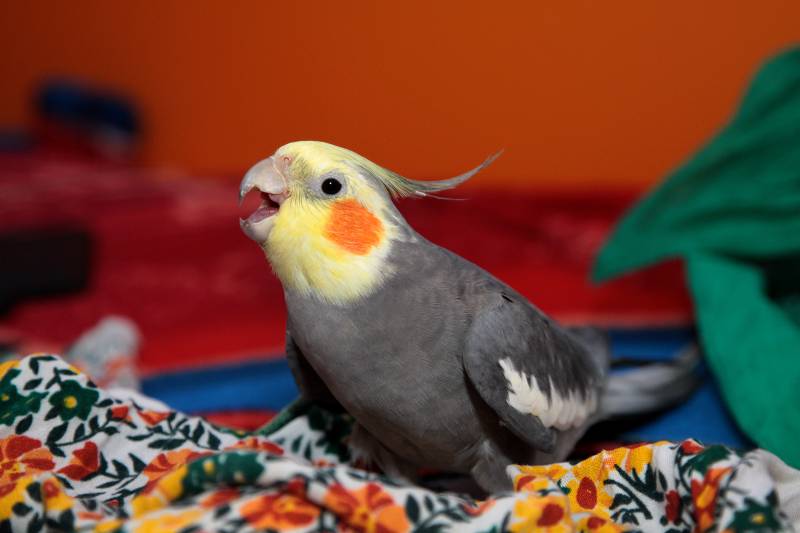
Conclusion
Grey cockatiels may be the least showy of all cockatiel colorations, but they’re still beautiful family companions. Their gentle and docile nature makes them a great choice for beginner bird owners and those with children. As with all birds, grey cockatiels have special care requirements, and all prospective owners should do their due diligence well before adopting to ensure they’re the right fit for a new feathered friend.
See Also:
- How Big Do Cockatiels Get? Average Weight & Growth Chart
- Cockatoo vs. Cockatiel: The Key Differences (With Pictures)
Featured Image Credit: Simona Robová, Pixabay


